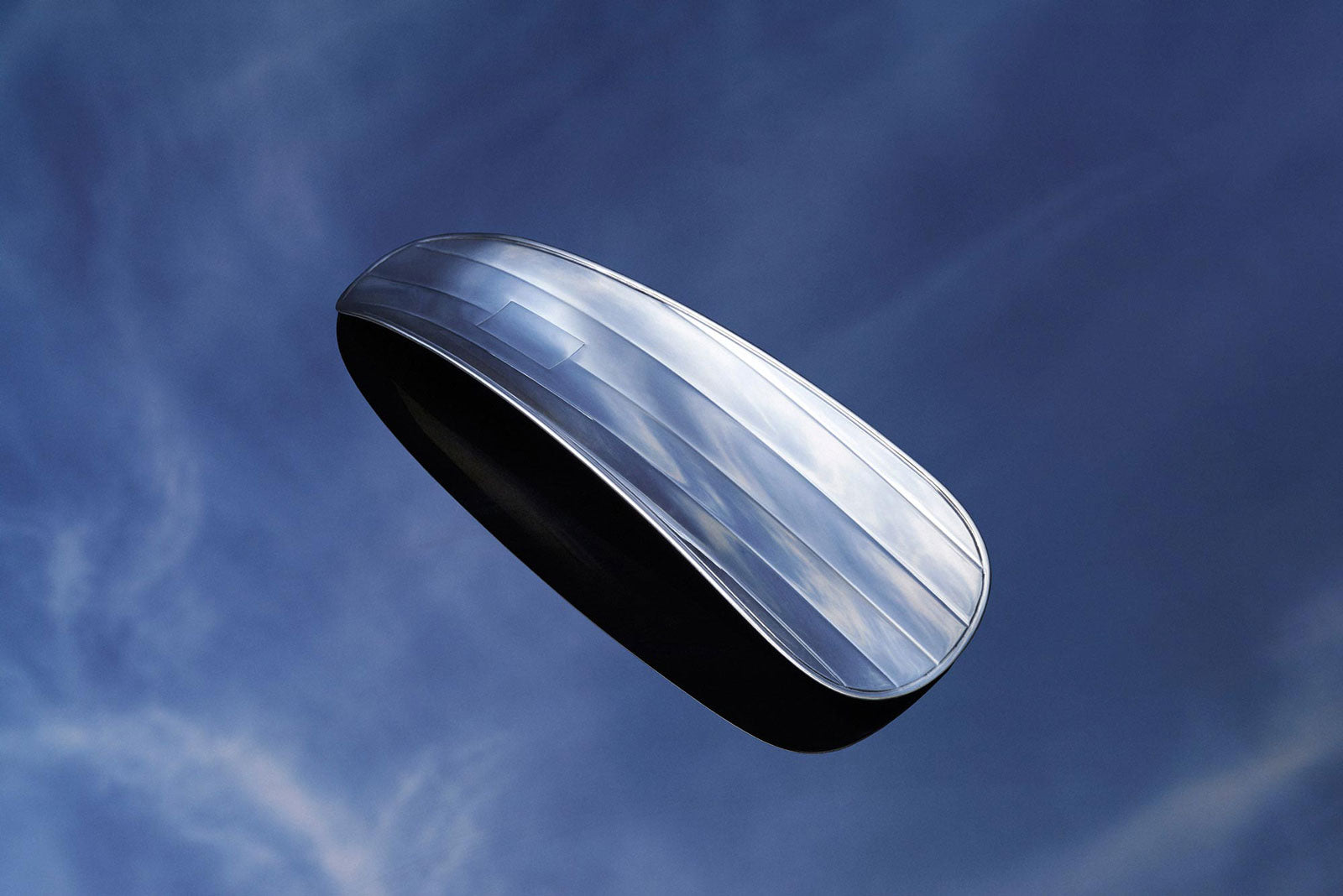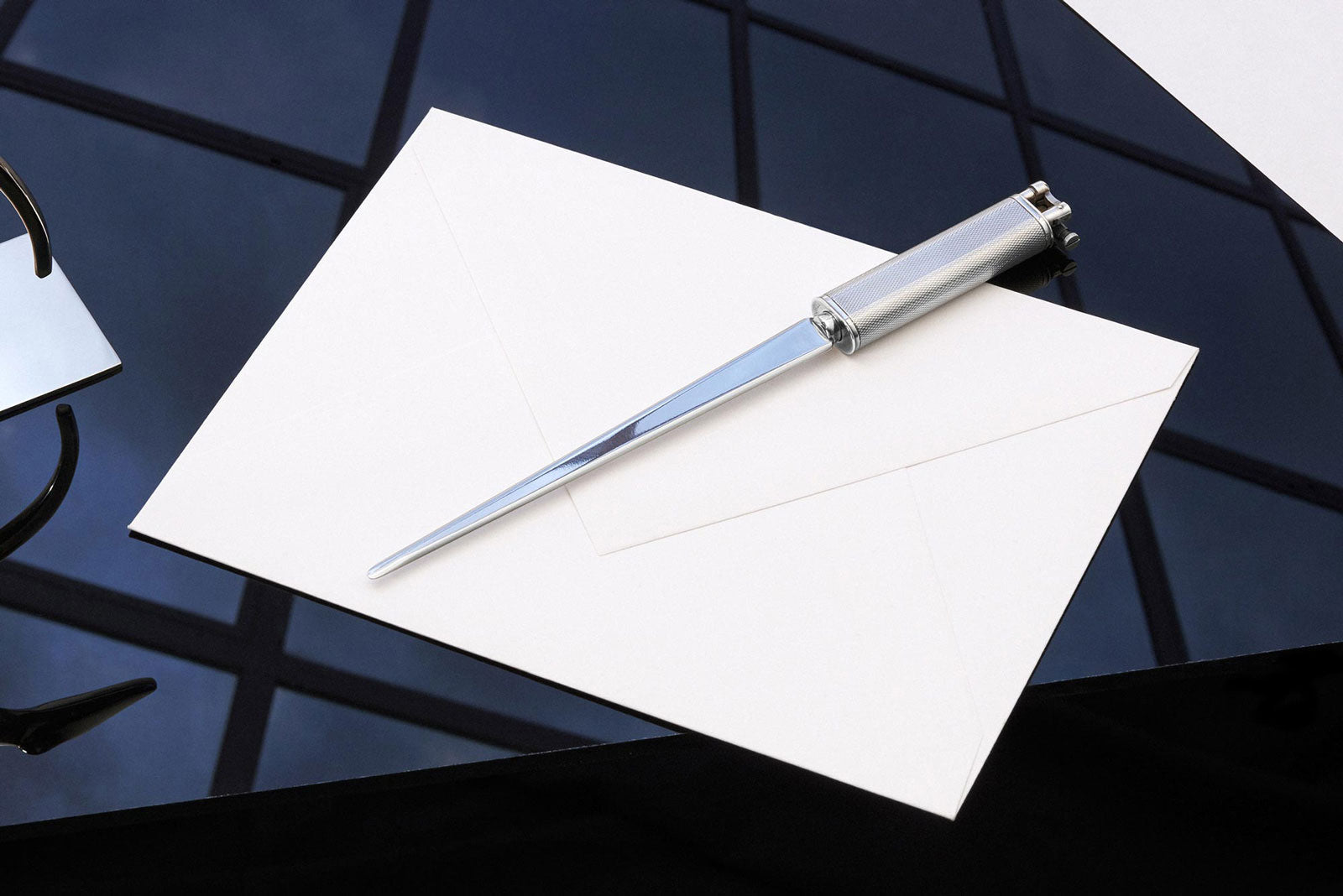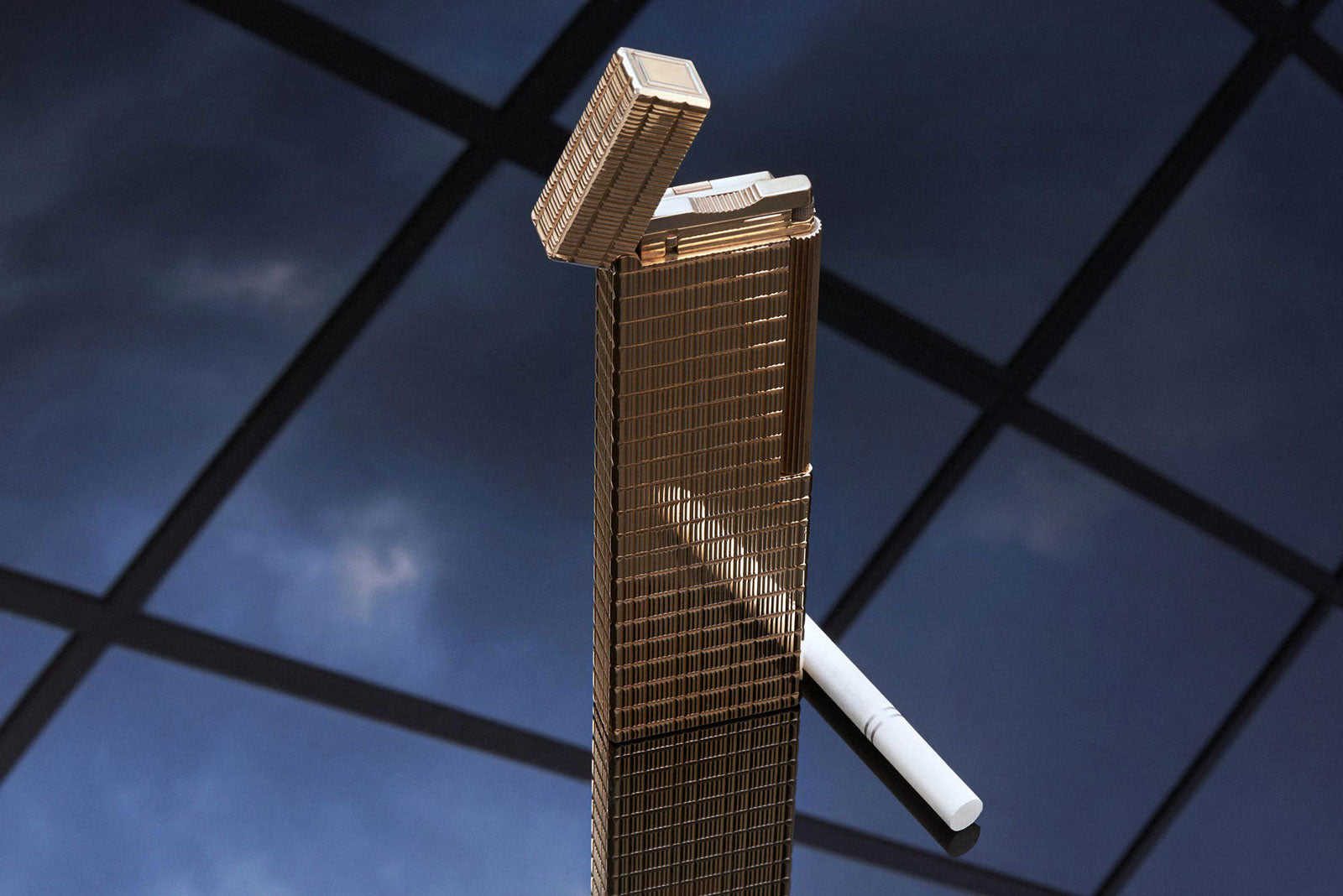A unique sterling silver, engine turned smoking desk compendium containing a pair of removable individual cigarette ash trays, a unique Dunhill sterling and engine turned "Bijou" style lighter all with a clock set flush into the lid of the box, with space inside the box for three and a half inch long cigarillos or cigarettes.
The box is of the highest quality production of silver from arguably, certainly from a design point of view, the golden age of silver; the Art Deco period. For Dunhill it was a time of experimentation, unique design and 'fun'! This is all very fascinating since when this actual piece was made, 1930, the world was experiencing the deepest financial crisis known following the September 1929 Wall Street Crash. However, the "jet set" crowd of the time were still spending on unique and lavish items from houses such as Cartier, Dunhill Van Cleef & Arpels on special items such as this, and keeping the bright and talented minds across Europe's ateliers very busy.
The idea to combine time keeping with accessories was not new, but with the advancement of miniaturising watch movements, making them more accurate and robust, they were starting to appear in new ways. For example, legend has it, wealthy South American customer of Dunhill, Señor Santiago Soulas, requested for a watch to be placed into a cigarette lighter for him. This then first appeared in the Dunhill catalog as the "Unique B" in 1926. During this time there were also a number of combination pieces which started to appear in the catalogs for the first time; cigar cutters, a key with a watch and then compendiums which had spaces for various necessities and combined lighters cigarette cases, swizzle sticks, pencils, amoung other items. For the ladies there was even a 'vanity' lighter, 'containing all the necessary beautifying aids. Puff, powder, mirror and lipstick are cleverly concealed in the dainty case'. So the catalog describes. This lighter, and these concepts, were inspired by the 'minaudières' carried by elegant ladies of the 18th century.
The rich and famous form all over the world pushed boundaries, made lavish requests and were accordingly equipped. There were two main workshops in London which eventually combined; William Frederik Wright and Ramsden & Roed. There was "La Nationale" in France. They were also highly productive during this period producing most of the early watch lighters for Dunhill, and then the expert enameler Louis Kuppenheim. However, of all the finest combination pieces that have come to light over the years there is one craftsman who is attributed to them; Matteo Cellini. Known fondly as "Bando". Each of the pieces that bore his hand were hand engraved with his name, by him. This can be seen present here along side the Dunhill London assay marks.
The Bando signature first appeared on a Dunhill piece in 1919. It was referred to in the catalog as follows; "these superb cases are the work of the renowned master craftsman in precious metal, Matteo Cellini, known familiarly to his fellow workmen as 'Bando'. In beauty of design and perfection of craftsmanship they rival the famous craftsmen of old. Each bears the signature of the artist-craftsman known as 'Bando'".
This special piece is simple in design. A soft edged rectangular box showing Art Deco touches such as the stepped cut feet, soft squared off sides and use of the engine turning throughout the body. The clean lid is mainly filled by the elegant gilt clock dial with fine engine turned center. The weight of the box, not actually being that large, even without the clock movement, is impressive. Such is the gauge and amount of silver used to create it.
The clock is powered by a signed "Swiss Made", hand wound mechanical, fifteen jewel movement adjusted to two positions. It is running well, and keeps good time. The Arab numerals are applied in a typical, clean Art Deco style font with a minute track around the edge. The dial is now displaying some staining from moisture, but has been left to keep originality. The beautiful hand set are hand made in a style of London clocks from the 1750 - 1800's where the hour hand took on a more elaborate form. They are filled with the original radium. There is one small piece that is missing, but does not distract overall. The hour numerals are all original, painted inside, but were never set with any luminous material. They have not been 'scrapped', they were just never filled that way.
The clock portion of the box is actually double hinged. Again, displaying the masterful way in which the piece was hand made. The clock can be lifted via the use of a fingernail, from the lid of the box to both tilt forward to read more easily once on the desk, and then the winding, setting and regulating can be done from this position via the rear. The lid then also lifts open from the opposite direction, using the exposed silver bar. This is perhaps were the real magic happens. Once opened the small space inside the box is revealed. It is large enough to fit a modern cigarette with a filter, which is unusual for the time, as cigarettes did not yet have filters. Therefore it can be assumed the original purpose was for cigarillos or café cigars. However, integrated into the lip of the interior frame of the box are two pull down compartments that are so well made that they do not immediately become obvious. The one to the right holds a pair of individual engine turned and gilt lined ash trays. Both with the corresponding and date matching "AD" assay marks. The compartment to the left holds a small sterling silver "Bijou" engine turned body, lift arm Dunhill lighter. Also, with the corresponding date and matching "AD" assay marks. It is miraculous that all three of these original components have remained complete with the box for what is now ninety two years, and are perfect in condition!
The working lighter delivered with the box is no ordinary "Bijou". This model was launched in 1928 and came in three sizes. None of which correspond to this, custom made for the box. So much so that it can only go back in the space in one direction, and the clearance allowance is minuscule. The size of the lighter being 38mm long by 28mm high by 12.5mm wide is a one of a kind size Bijou. This tiny jewel of a lighter with its curved lift arm is very much befitting of its name. The model was originally targeted more toward ladies, but went on to become marketed as a necessity for a gentleman dressed in an evening suit. Soon becoming a universally popular model. However, in this exact size it was never produced. A unique Dunhill lighter!
The overall condition of the piece is excellent. The pink gold cartouche mounted to the front may not be original to the box, it is hard to distinguish. It is currently blank having previously been monogrammed. It has certainly been part of the box for a while, if not since its creation. There is no damage to the outer or inner of the box itself. The original gilt lining is complete throughout and even the navy velvet lining inside the uniquely made side compartments so as not to scratch the lighter or ash trays when returning them to the box's interior!
This is an exceptional and unique piece of Dunhill history, the likes of which will never be made again. A jewel of a box, if just a box with a clock mounted to the lid. Include the two additional compartments making this compendium extra special. Given that this was made by Dunhill's most celebrated craftsman, this takes on another level of uniqueness entirely.
















